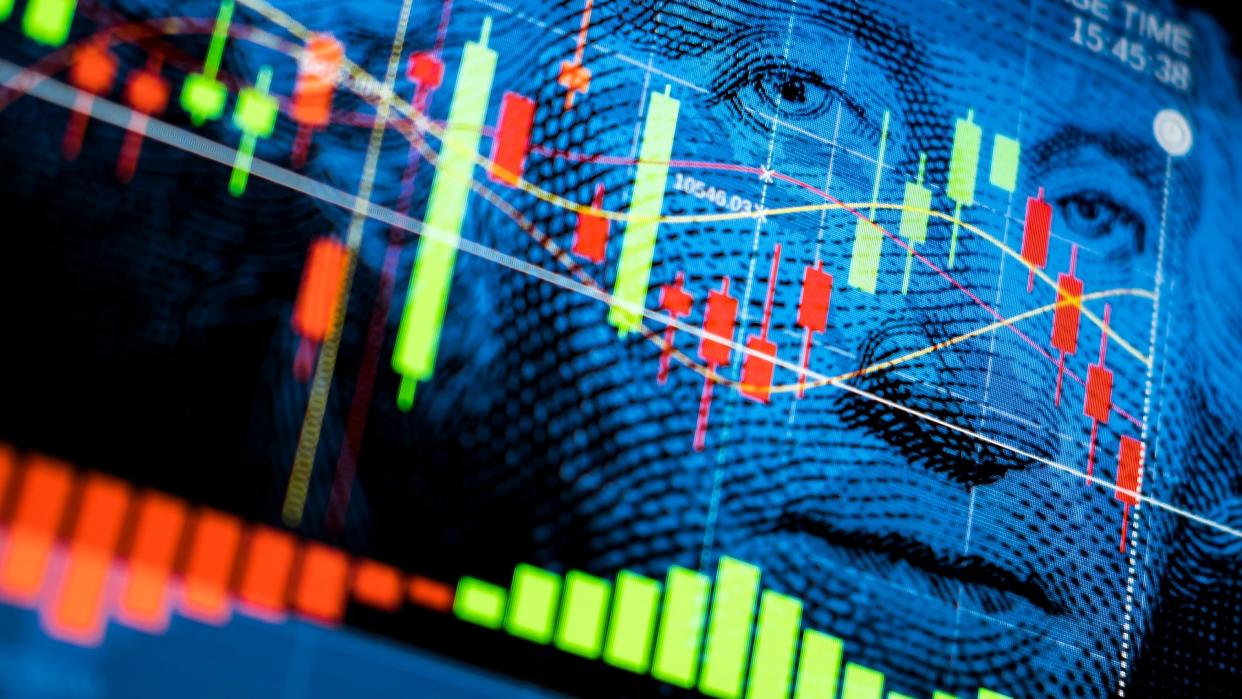What Is Hyperinflation and Are We Headed There?

In 2022, the U.S. experienced inflation at a rate of 8%, year-over-year. In 2023, thanks to efforts by the U.S. Federal Reserve, inflation has begun tapering off. 2023 is expected to end with a 5.8% total average increase.
In April 2023, the Consumer Price Index increased by 4.9%, according to the U.S. Bureau of Labor Statistics. This represents the smallest 12-month increase since April 2021. However, the CPI for essentials like food continues to increase at a rate of 7.7%.
Read: How To Build Your Savings From Scratch
Factors like these have U.S. economists concerned about hyperinflation in the U.S. But what is hyperinflation? And is the U.S. in danger of it?
What Is Hyperinflation?
While inflation measures the increase in the price of goods and services over time, hyperinflation reflects rapidly rising prices over a short period of time, far beyond what would be considered normal in any economy.
Although there’s no specific number that signifies hyperinflation, economists typically classify a monthly inflation rate of 50% or more as hyperinflation. At that rate, inflation would show a 1,000% increase year-over-year. For instance, an item that costs $1 on Jan. 1 would cost $130 the following year during a period of hyperinflation.
Before hyperinflation, a country may see “galloping” inflation, or increases of 10% or more per year. The U.S. fell short of that in 2022 with inflation of 8%.
What Causes Hyperinflation?
One of three factors typically cause hyperinflation:
The federal government prints money to the extent that it devalues the currency.
The demand for goods vastly exceeds supply. This is called demand-pull inflation.
The cost of production increases dramatically. This is called cost-push inflation.
During the pandemic and in the months following, there was a risk of demand-pull inflation. While stimulus checks were pumping money into the economy, we were facing a labor shortage and supply chain issues. This reduced the supply of consumer goods.
Then, as minimum wages increased, the U.S. also felt the forces of cost-push inflation. Although these factors led to high inflation, it fell short of galloping inflation or hyperinflation.
During demand-pull inflation, some consumers begin hoarding consumer goods, which exacerbates supply chain shortages and raises prices further. To prevent this scenario at the end of 2022 and the beginning of 2023, the U.S. government began increasing interest rates to tighten the money supply.
But it remains to be seen whether or not that will be enough to stem inflation in the second half of 2023 or even into 2024 and beyond.
Hyperinflation tends to occur during a recession, which many economists are predicting for the second half of 2023. But a number of factors would have to converge to create hyperinflation, and it’s highly unlikely to occur since the Fed has techniques to intervene and stop it. Hyperinflation rarely occurs in developed countries like the U.S.
A Brief Look At Hyperinflation Through History
There is one famous historical example that can be used to better understand the factors that cause hyperinflation. After World War I in Germany, prices increased 322% year-over-year, with an increase of 41% per day in October 1923. To cover war debts, Germany began printing money.
With their money worth less and prices rising rapidly, residents began using their cash to stock up on commodities. This created demand-pull inflation in addition to the value of paper money diminishing due to the vast supply. During hyperinflation, residents try to spend money faster than the government can print it. People may also turn to barter to exchange goods and services.
Hyperinflation shifts wealth to the government and the ruling class at the expense of stable middle- and upper-income citizens. People rush to spend their money before it loses value.
Has the U.S. Ever Had Hyperinflation?
Thanks in large part to intervention from the Federal Reserve, the U.S. has never faced hyperinflation. In fact, even the inflation figures in 2022 were not the highest in history. In 1920, U.S. inflation reached 23%. In 1980, it reached 14% during the end of a period termed “The Great Inflation,” which ended in 1982.
The Great Inflation also marked the time period when the U.S. monetary system completely broke its ties with the value of gold. The U.S. experienced both cost-push and demand-pull inflation. Then, just as the U.S. government is doing now, the Federal Reserve raised interest rates in order to tighten the money supply and rein in inflation.
In spite of the challenges hyperinflation has on a government’s economy and its businesses, a few groups actually benefit from it.
Exporters can win, because their goods have more value overseas than they do in the country of origin. Also, they receive payment in foreign currency, which rises in value as the value of the local currency falls.
If you’ve taken out a loan or owe vast amounts of debt, you may also find yourself in a better position with hyperinflation. As the value of the U.S. dollar diminishes, your debt will take less to pay off, until it vanishes completely.
Is the U.S. Facing Hyperinflation?
If you’re thinking of taking out a loan or charging your credit cards to the hilt as a hedge against hyperinflation, it’s probably not a good idea. Most experts agree that the Fed will intervene before hyperinflation occurs.
The U.S. Federal Reserve operates independently of Congress or the President, which makes the U.S. different from other countries where hyperinflation has occurred.
Based on the U.S. inflation rates right now, the U.S. is not even close to hyperinflation. Although some internet alarmists try to draw parallels between our cost-push and demand-pull inflation right now, economists say hyperinflation is highly unlikely.
This article originally appeared on GOBankingRates.com: What Is Hyperinflation and Are We Headed There?
